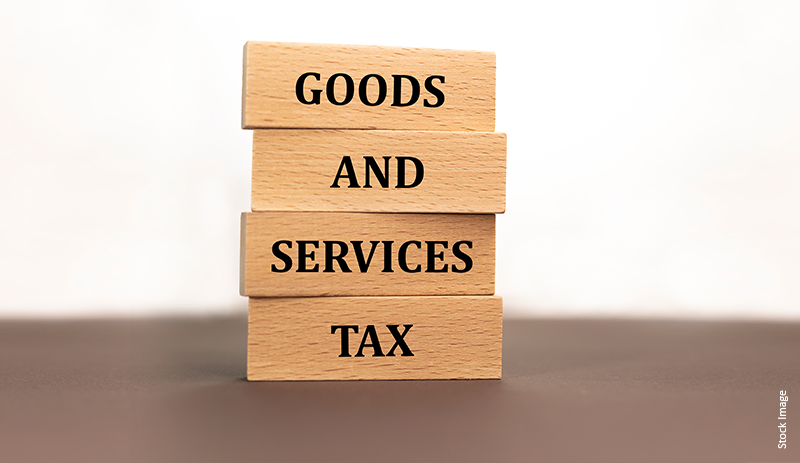GST, or Goods and Services Tax, is an indirect tax introduced by the Government of India. It was implemented with effect from July 01, 2017, as a replacement for other taxes like Value Added Tax (VAT), service tax, Special Additional Duty of Customs (SAD), excise duty, and others.
The introduction of GST has brought convenience and uniformity among buyers and sellers. It has also made the administration of tax collection hassle-free for the government.
There are different types of GST. These include IGST, UTGST, CGST, and SGST. Here is more information on each of these taxes and how they differ from one another.
Four Types of GST in India
SGST
SGST, or State Goods and Services Tax, is levied by the state government in the country on the supply of goods and services within each state. The tax is collected under the provisions of the SGST Act, 2017.
Moreover, the state government is the sole beneficiary of the revenue collected from SGST. SGST was introduced to replace state taxes like the luxury, lottery, purchase, and sales taxes, among several others.
CGST
CGST, or Central Goods and Services Tax, is also levied on the supply of goods and services within the state. However, it is imposed by the central government. CGST is collected under the authority of the CGST Act, 2017. And the central government is the sole beneficiary of the collected revenue from CGST.
CGST was introduced to replace taxes like services tax, excise tax, etc.
An important thing to note is that the rate of GST is equally divided between both GST types – SGST and CSGT. The collected revenue from SGST is given to the state government, and that from CGST is to the central government.
IGST
IGST, or Integrated Goods and Services Tax, is the third component of GST. It is levied on the inter-state transfer of goods and services. It is also imposed on imported and exported goods and services.
The central government collects it under the authority of the IGST Act, 2017. However, its revenue is shared between the central and state governments. In most cases, IGST rate = CGST rate + SGST rate.
UTGST
UTGST, or Union Territory Goods and Services Tax, is levied on intra-state transactions. It is charged under the authority of the Union Territory Goods and Services Tax Act, 2017. It extends to the Union territories of Dadra and Nagar Haveli, Daman and Diu, the Andaman and Nicobar Islands, Lakshadweep, Chandigarh, and others.
The tax was introduced as some union territories may not have an elected government and their own legislature and may be supervised by the Central Government.
What is the difference between CGST, SGST, and IGST?
While UTGST is strictly applicable to the Union Territories, there remains some confusion between CGST, SGST, and IGST. Here is an example that explains the difference between these three types of GST:
Suppose a Mumbai-based business sells a product to a customer in Pune for ₹100. The applicable GST rate is 18%. Under the GST system in India, the tax is collected in two parts: CGST and SGST.
- Since the sale is within the same state of Maharashtra, the business would have to pay ₹9 (9% of 100) as CGST to the central government.
- The business would also have to pay ₹9 (9% of 100) as SGST to the Maharashtra state government.
So, the business would have to pay (9+9) = ₹18 as CGST and SGST for the sale of goods worth ₹100 within the same state.
Suppose the Mumbai-based business sells the same product to a customer in Kerala for ₹100. In this case, since the sale is between two different states, the company would have to pay IGST instead of CGST and SGST. So, the business would have to pay ₹18 (18% of 100) as IGST for the sale of ₹100 between the two states.
To sum it up
These four GST types in India are relatively new, which is why many buyers and sellers may not have adequate information about how they are levied. However, GST remains one of the most straightforward introductions to the tax system in the world.
It has made the entire process of indirect taxation more compact and simpler for buyers, sellers, and the government too. GST also addresses concerns like tax evasion and fraud. Understanding how it is implemented and collected can help businesses and other stakeholders immensely.
Disclaimer- This article is based on the information publicly available for general use as well as reference links mentioned herein. We do not claim any responsibility regarding the genuineness of the same. The information provided herein does not, and is not intended to, constitute legal advice; instead, it is for general informational purposes only. We expressly disclaim any liability, which may arise due to any decision taken by any person/s basis the article hereof. Readers should obtain separate advice with respect to any particular information provided herein.








 Table of Contents
Table of Contents








